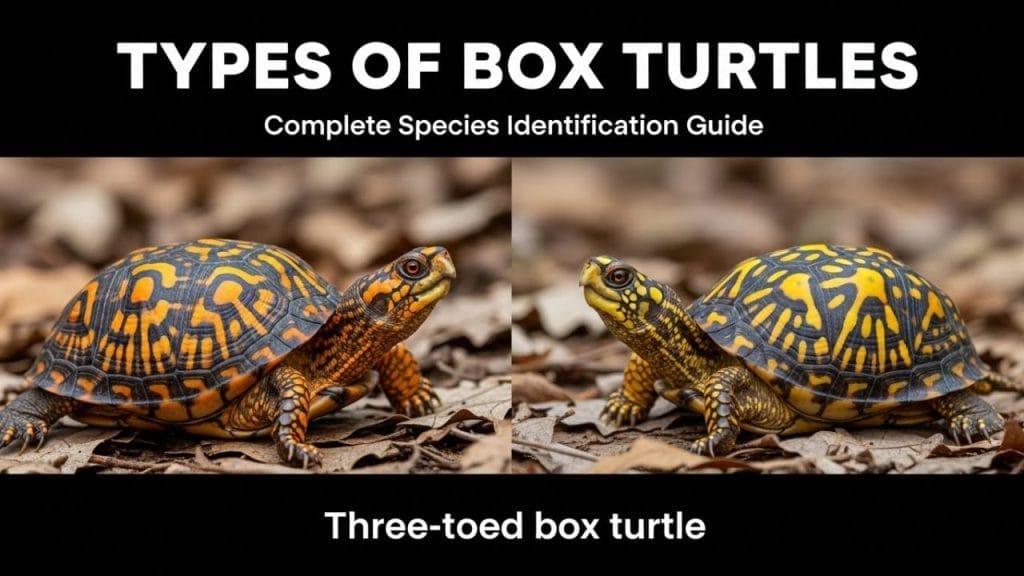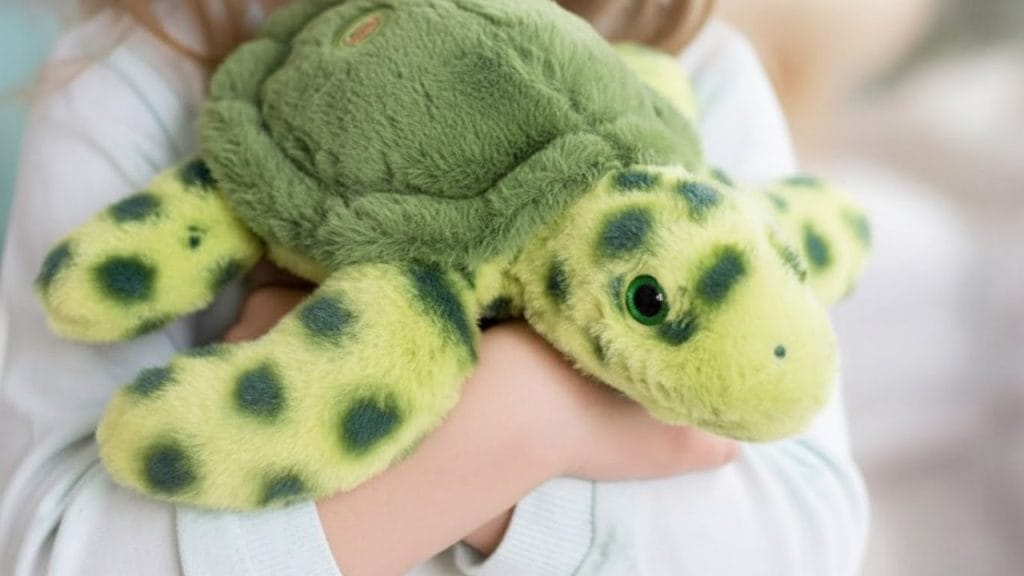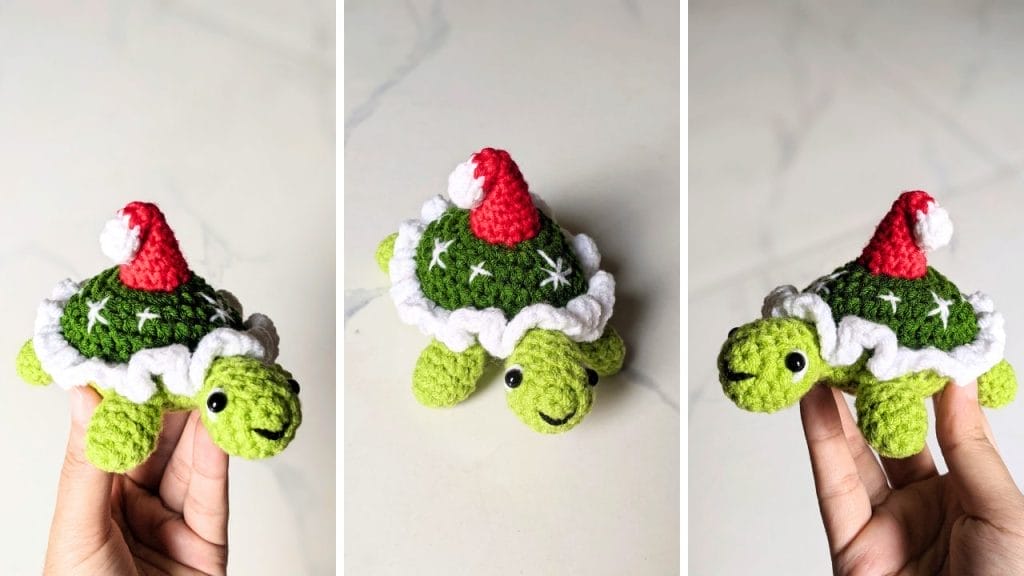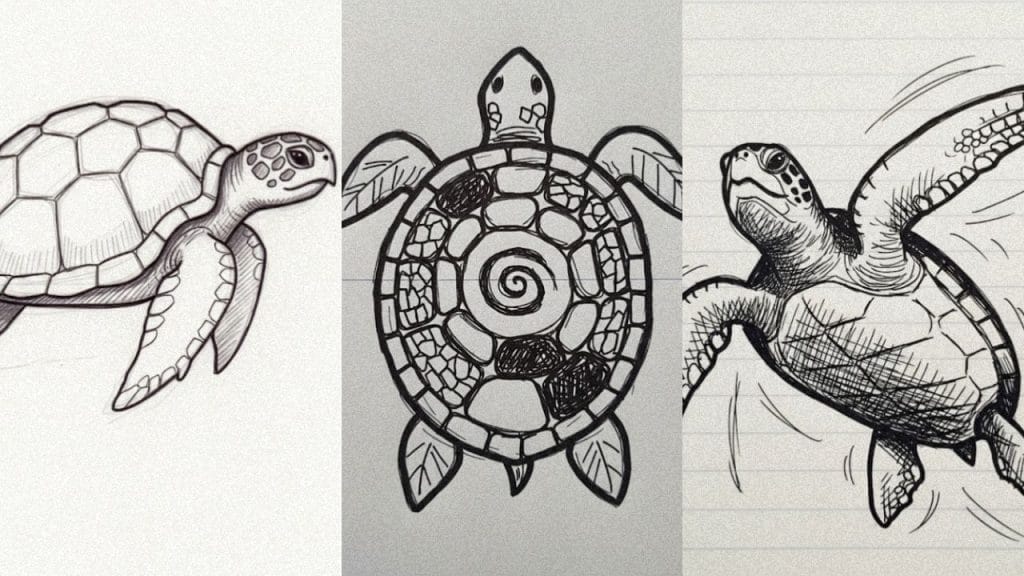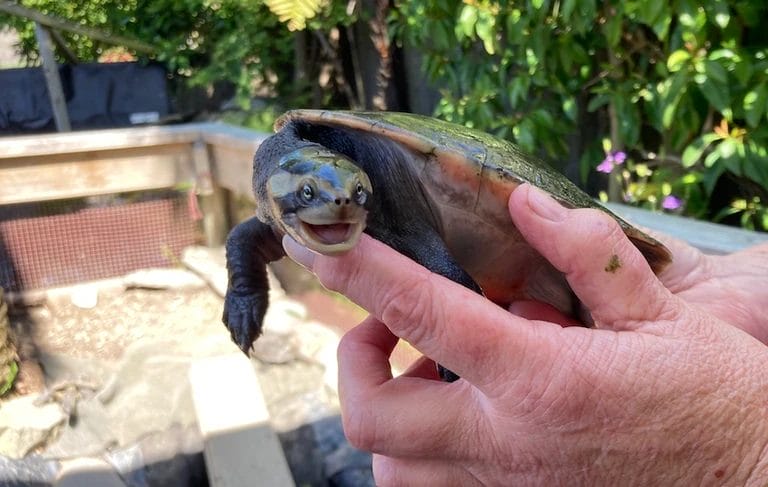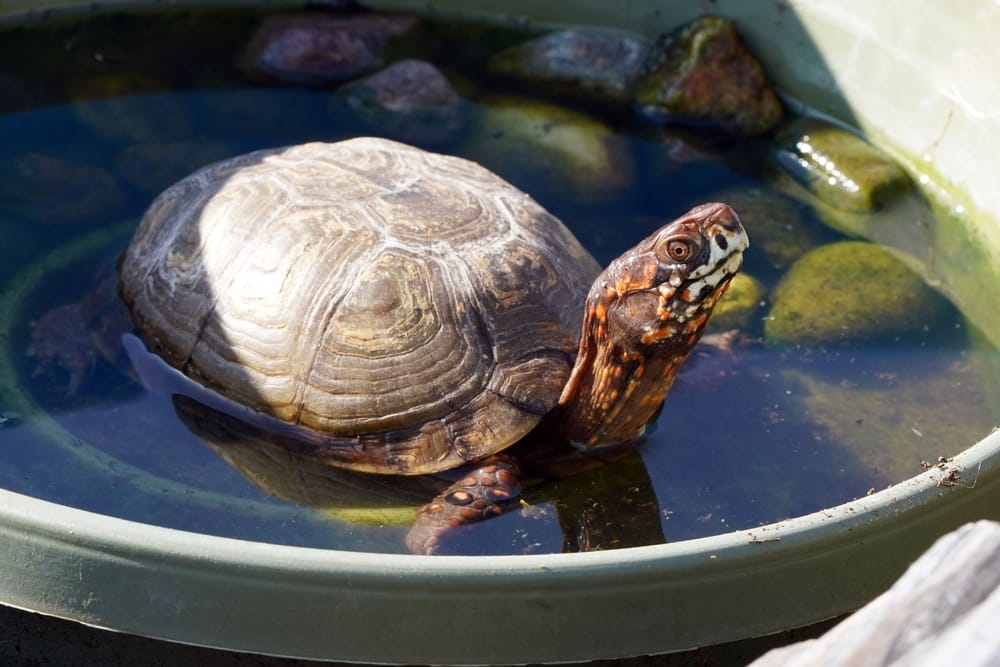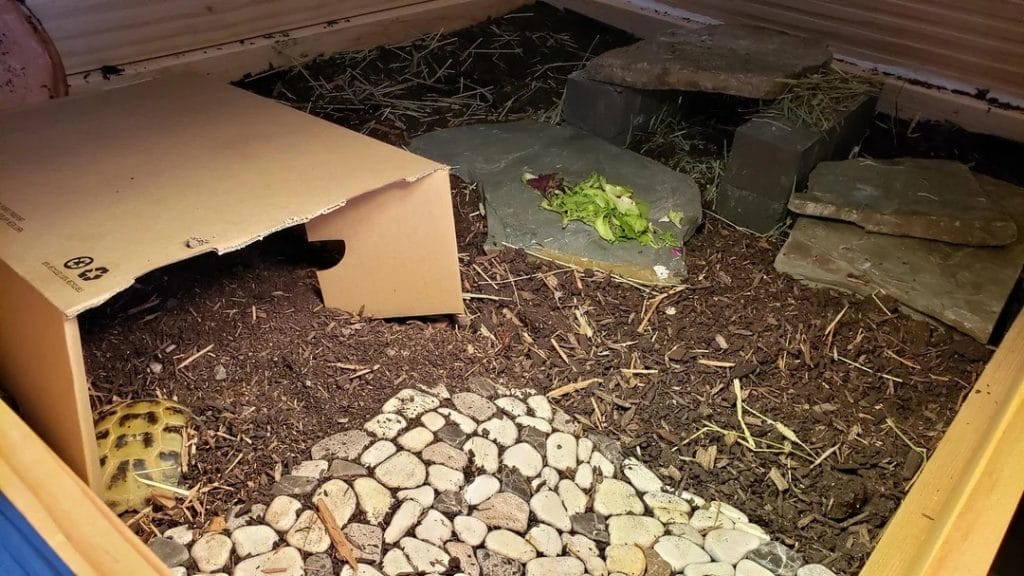Diamondback Terrapin Care Guide For Beginners [Full Guide]

This post was created with help from AI tools and carefully reviewed by a human (Muntaseer Rahman). For more on how we use AI on this site, check out our Editorial Policy.
So you’re thinking about getting a diamondback terrapin?
Let me start with this: these turtles are gorgeous, they’re smart, and they’ll probably outlive your current car. But they’re also picky, messy, and need water that’s basically ocean-lite.
If you’re still here, good. Let’s talk about what it actually takes to keep one of these coastal cuties happy.
What Even Is a Diamondback Terrapin?
Picture this: a turtle that lives where rivers meet the ocean, in that weird salty-but-not-quite-ocean water we call brackish.
Diamondback terrapins are native to coastal areas from Massachusetts down to Texas, hanging out in salt marshes and estuaries. The males max out around 5-6 inches, while females can hit 9 inches and develop these massive jaws that can crack open clams like walnuts.
They’ve got these cool diamond-shaped patterns on their shells (hence the name) and skin covered in black spots and squiggles. Some have orange markings that make them look like they went to a really good tattoo artist.
With proper care, these guys live 25-40 years. That’s longer than most marriages, so think hard before you commit.

The Brutal Truth About Diamondback Terrapins
Here’s what nobody tells you upfront: diamondback terrapins are one of the most difficult North American turtles to keep.
I’m serious. They’re not starter turtles. They’re not even intermediate turtles. They’re for people who are ready to become part-time water chemists.
Their water needs to be kept ridiculously clean or they’ll develop skin problems, with the first warning sign being red rings around their eyes or white patches on their skin. And that’s not just ugly—it can kill them within days if you don’t fix it.
But if you’re willing to put in the work? They’re actually pretty chill pets. They’ll eat from your hand, they’re curious, and watching them crush snails with those powerful jaws never gets old.
If you’re new to turtle keeping, consider starting with more forgiving species like painted turtles or red-eared sliders, which have similar care requirements but are much more tolerant of beginner mistakes.
This Hilarious Turtle Book Might Know Your Pet Better Than You Do
Let’s be real—most turtle care guides feel like reading a textbook written by a sleep-deprived zookeeper.
This one’s not that.
Told from the snarky point of view of a grumpy, judgmental turtle, 21 Turtle Truths You’ll Never Read in a Care Guide is packed with sarcasm, sass, and surprisingly useful insights.
And hey—you don’t have to commit to the whole thing just yet.
Grab 2 free truths from the ebook and get a taste of what your turtle really thinks about your setup, your food choices, and that weird plastic palm tree.
It’s funny, it’s honest, and if you’ve ever owned a turtle who glares at you like you’re the problem—you’ll feel seen.
Tank Setup: Size Matters (A Lot)
Forget what you think you know about turtle tanks.
You need at least 60 gallons of water for a male or 90 gallons for a female. The rule is 10 gallons per inch of expected adult length, and since these guys swim like Olympic athletes, they need the space.
The water should be 45-50cm deep (about 18-20 inches) to let them swim naturally. Shallow water makes them stressed, and stressed terrapins are unhealthy terrapins.
What Goes in the Tank
Substrate: Most experts say skip it entirely or use crushed coral if you really want something. Crushed coral actually has a bonus—it’s high in calcium and helps wear down their beaks naturally.
Regular gravel? No. It can get stuck in their digestive system and kill them.
Plants: Both live and fake plants work. Plants help clean the water and give them something to nibble on.
Basking area: This is non-negotiable. You need a platform that lets them get completely out of the water and dry off. Floating docks, rocks, cinder blocks, whatever works—just make sure it’s stable enough that a chunky female won’t sink it.

The Brackish Water Drama
Okay, here’s where it gets controversial.
In the wild, diamondback terrapins live in brackish water—that’s water with some salt, usually with a specific gravity of 1.004-1.012.
So should you use brackish water? The terrapin community fights about this constantly.
Here’s the deal: captive-bred terrapins raised in fresh water can stay in fresh water, but wild-caught ones absolutely need brackish water or they’ll develop shell rot.
Even with captive-bred terrapins, many keepers use some salt (about 1-2 tablespoons per gallon) because it helps prevent bacterial growth. The salt acts like a natural antiseptic.
But here’s the catch: even though terrapins live in brackish water, they need fresh water to actually hydrate. In the wild, they drink rainwater. In captivity, you need to soak them in a shallow container of fresh water once a week for 10-20 minutes.
Yeah, it’s weird. They’re weird turtles.
Filtration: Overkill Is the Right Amount
Remember when I said these turtles are messy? I meant it.
You need a powerful canister filter or submersible filter, because turtles destroy water quality. Get one rated for at least double your tank size. If you have a 75-gallon tank, get a filter for 150 gallons.
The water should be crystal clear. If it’s cloudy, you’re already behind.
Test your water parameters regularly—you want 0 ammonia, 0 nitrite, and some nitrates. Get a test kit and use it twice a week until you get the hang of things.
The pH should be 6.8-7.0 (slightly acidic to neutral).
This issue affects all aquatic turtles—our article on top turtle-keeping mistakes covers water quality problems in detail across multiple species.
Temperature and Lighting
Water temperature: Keep it between 76-78°F (24-26°C) for adults. Hatchlings need it warmer, around 85°F.
Use an aquarium heater, the same kind people use for fish tanks.
Air temperature: The area above the water should be around 80°F.
Basking spot: The basking area needs a hot spot of 90°F (32°C). Use a heat lamp positioned over the basking platform.
UVB lighting: This is where people mess up. UVB is NOT optional—lack of proper UVB leads to impaired skeletal, muscle, and immune function.
Get a UVB bulb designed for reptiles, keep it about a foot from the basking spot, and run it for 12 hours a day. Replace it every 6 months, because they stop producing UVB even when they still give off light.
Real sunlight is even better. Taking them outside for 30 minutes to an hour once a week in natural sunlight is super beneficial. Just watch the temperature—they can cook in direct sun.

What Do Diamondback Terrapins Eat?
Here’s the fun part: these guys are carnivores with attitude.
In the wild, they eat snails (especially periwinkle snails), clams, mussels, crabs, fish, marine worms, and other shellfish. Those massive jaws? They’re for crushing shells.
In captivity, you want variety:
Commercial food: Get 3-4 different high-quality turtle pellet brands and rotate them. This gives them a range of nutrients.
Protein: Offer frozen or fresh shrimp, fish, crayfish, earthworms, bloodworms, mealworms, and krill.
Treats: Freeze-dried krill and brine shrimp work great.
Vegetables: Adults should get about 70% vegetables and 30% protein. Try leafy greens, water cress, and aquatic plants.
Avoid: Don’t give them chicken, beef, or pork regularly. They don’t digest foods from outside their natural habitat very well.
How Much and How Often?
Hatchlings: Daily feeding, just what they can eat in one sitting.
Juveniles: Every other day.
Adults: 2-3 times per week.
Use the “head size method”—give them an amount of food roughly the size of their head. This scales naturally as they grow and prevents overfeeding.
Pro tip: Feed them in a separate container. They’re insanely messy eaters who crush food rather than bite it, and keeping that chaos out of your main tank will save you hours of cleaning.
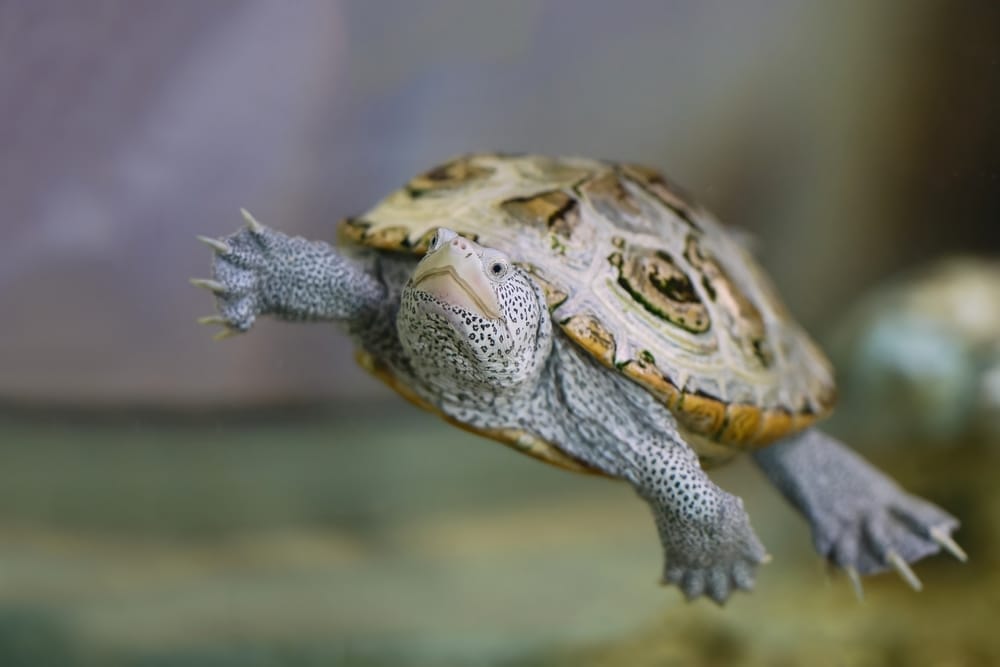
Common Health Problems (And How to Avoid Them)
The big three are shell rot, viral infections, and fungal diseases.
All of them trace back to poor water quality. See why I kept harping on clean water?
Shell rot: The shell gets soft, warped, or infected. This happens when water quality is bad or the diet is poor.
Eye problems: Often caused by poor water quality, lack of UVB, or bad diet. You’ll see swelling or discharge.
Respiratory infections: Common in captivity, symptoms include lethargy, trouble swimming, or being found upside down.
Metabolic bone disease: Caused by lack of UVB light and calcium. The shell gets soft and bones don’t develop properly.
The solution to most of these? Clean water, proper UVB, good diet, and the right temperature. It’s not rocket science, but it does require consistency.
Can They Live with Tank Mates?
Diamondback terrapins are actually pretty social and enjoy living with other terrapins. They’ll bask together and share resources.
But there are rules:
- Keep similar-sized terrapins together
- Don’t overcrowd them or they’ll nip at each other’s tails
- Make sure everyone has enough space and basking area
As for fish? They can coexist with certain species like tetras, yellow cichlids, or zebrafish. But terrapins might eat smaller fish, so choose wisely.

Handling Your Terrapin
Turtles generally don’t like being handled. Keep it to a minimum.
When you do need to pick them up, support their entire body with both hands. They’re usually docile but may bite if threatened, especially females with those powerful jaws.
Want to interact? Try hand-feeding with feeding tongs. It’s safer for your fingers and less stressful for them.
Where to Get One (Do NOT Take from the Wild)
Never, ever take a diamondback terrapin from the wild. They’re already struggling with habitat loss and getting killed in crab traps.
Buy captive-bred hatchlings from reputable breeders. They’re healthier, parasite-free, less stressed, and you’re not harming wild populations.
Some states (like North Carolina and South Dakota) strictly regulate or prohibit buying turtles, so check your local laws.
Tank Cycling: The Thing Nobody Warns You About
Before you even get your terrapin, you need to cycle your tank. This means building up beneficial bacteria that process ammonia and nitrites.
It takes weeks to months. You add ammonia, add bacteria, test daily, and wait until you get 0 ammonia, 0 nitrite, and some nitrates.
Skipping this step causes “new tank syndrome” which can kill your terrapin.
I know, it’s boring. Do it anyway.
The Bottom Line
Diamondback terrapins are not easy pets.
They need huge tanks, perfect water quality, special lighting, a weird brackish-but-sometimes-fresh water situation, and a diet more complicated than most humans eat.
But here’s the thing: if you do it right, you get a beautiful, intelligent animal that’ll be with you for decades. They’ll recognize you, eat from your hand, and give you endless entertainment.
Just go in with your eyes open. These aren’t goldfish. They’re a 40-year commitment that requires actual effort every single week.
If that sounds like too much, get a different turtle. If that sounds like a challenge you’re ready for, welcome to the terrapin club.
The water changes never end, but neither does the fun.

About Author
Muntaseer Rahman started keeping pet turtles back in 2013. He also owns the largest Turtle & Tortoise Facebook community in Bangladesh. These days he is mostly active on Facebook.


